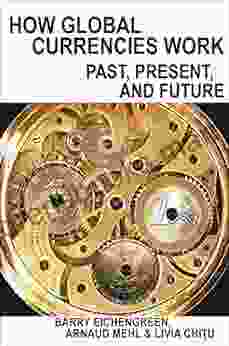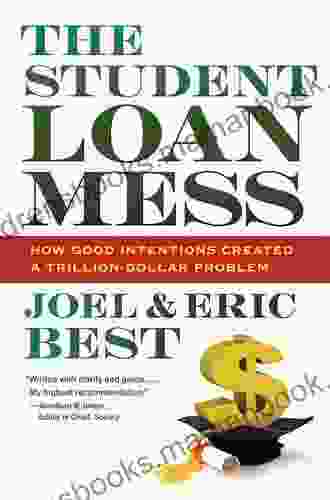How Good Intentions Created a Trillion-Dollar Problem

In the annals of human history, the road to unintended consequences is paved with good intentions. From the invention of the automobile to the rise of social media, countless innovations have left behind a trail of unanticipated and often devastating outcomes. One such example is the creation of the global financial system, which was born out of a desire to facilitate economic growth and stability, but has instead become a breeding ground for systemic risk and inequality.
The Origins of the Global Financial System
The roots of the modern global financial system can be traced back to the Bretton Woods Agreement of 1944. Following the devastation of World War II, the world's leading economic powers gathered in Bretton Woods, New Hampshire, to create a new international monetary system. The goal was to prevent the economic chaos that had plagued the global economy in the interwar years by stabilizing currency exchange rates and establishing a framework for international cooperation.
4.2 out of 5
| Language | : | English |
| File size | : | 3463 KB |
| Text-to-Speech | : | Enabled |
| Screen Reader | : | Supported |
| Enhanced typesetting | : | Enabled |
| Word Wise | : | Enabled |
| Print length | : | 246 pages |
| Lending | : | Enabled |
| X-Ray for textbooks | : | Enabled |
At the heart of the Bretton Woods system was the US dollar, which was pegged to gold at a fixed exchange rate of $35 per ounce. This arrangement, known as the gold standard, created a sense of stability in the global economy, as countries could now freely trade with each other without worrying about currency fluctuations.
The Rise of the Eurodollar Market
In the years following the Bretton Woods Agreement, the US dollar became the dominant currency in the global financial system. However, a growing number of countries began to accumulate US dollar reserves, which they held as a safe haven asset. This led to the creation of the Eurodollar market, a global network of banks and financial institutions that traded in US dollars outside of the United States.
The Eurodollar market allowed banks to lend and borrow US dollars without the oversight of the US Federal Reserve. This created a shadow banking system that was largely unregulated and opaque. As a result, the Eurodollar market became a breeding ground for risky financial practices, such as excessive lending and leverage.
The Collapse of the Bretton Woods System
In 1971, the US abandoned the gold standard, effectively ending the Bretton Woods system. This led to a period of floating exchange rates, which created volatility in the global financial markets. However, the underlying structural problems of the global financial system remained, namely the excessive risk-taking and leverage in the shadow banking system.
The Financial Crisis of 2008
The culmination of these structural problems came to a head in 2008, when the global financial system collapsed. The crisis was triggered by the collapse of the US housing market, which led to widespread defaults on subprime mortgages. These defaults caused a chain reaction throughout the global financial system, as banks and other financial institutions that had invested in subprime mortgages suffered heavy losses.
The crisis had a devastating impact on the global economy, leading to a deep recession and widespread unemployment. It also exposed the fundamental flaws in the global financial system and raised serious questions about the role of governments in regulating the financial sector.
The Trillion-Dollar Problem
The unintended consequences of the global financial system have been enormous. The crisis of 2008 alone cost the global economy trillions of dollars in lost output and unemployment. In the years since, the global financial system has continued to be plagued by systemic risk and inequality.
One of the most pressing problems is the rise of zombie banks. These are banks that are kept alive by government support, even though they are insolvent. Zombie banks pose a systemic risk to the global financial system, as they can potentially collapse in the event of another crisis.
Another major problem is the growing concentration of wealth in the hands of a few individuals and institutions. The global financial system has created a system of "too big to fail" banks, which are so large and interconnected that their collapse would have a devastating impact on the entire economy. As a result, these banks have been able to take on excessive risk, knowing that they will be bailed out by governments in the event of a crisis.
The global financial system was created with the best of intentions, but it has unfortunately led to a number of unintended consequences. These consequences include systemic risk, inequality, and a trillion-dollar problem. It is clear that the global financial system needs to be reformed, but it is equally clear that this will be a complex and challenging task.
4.2 out of 5
| Language | : | English |
| File size | : | 3463 KB |
| Text-to-Speech | : | Enabled |
| Screen Reader | : | Supported |
| Enhanced typesetting | : | Enabled |
| Word Wise | : | Enabled |
| Print length | : | 246 pages |
| Lending | : | Enabled |
| X-Ray for textbooks | : | Enabled |
Do you want to contribute by writing guest posts on this blog?
Please contact us and send us a resume of previous articles that you have written.
 Top Book
Top Book Novel
Novel Fiction
Fiction Nonfiction
Nonfiction Literature
Literature Paperback
Paperback Hardcover
Hardcover E-book
E-book Audiobook
Audiobook Bestseller
Bestseller Classic
Classic Mystery
Mystery Thriller
Thriller Romance
Romance Fantasy
Fantasy Science Fiction
Science Fiction Biography
Biography Memoir
Memoir Autobiography
Autobiography Poetry
Poetry Drama
Drama Historical Fiction
Historical Fiction Self-help
Self-help Young Adult
Young Adult Childrens Books
Childrens Books Graphic Novel
Graphic Novel Anthology
Anthology Series
Series Encyclopedia
Encyclopedia Reference
Reference Guidebook
Guidebook Textbook
Textbook Workbook
Workbook Journal
Journal Diary
Diary Manuscript
Manuscript Folio
Folio Pulp Fiction
Pulp Fiction Short Stories
Short Stories Fairy Tales
Fairy Tales Fables
Fables Mythology
Mythology Philosophy
Philosophy Religion
Religion Spirituality
Spirituality Essays
Essays Critique
Critique Commentary
Commentary Glossary
Glossary Bibliography
Bibliography Index
Index Table of Contents
Table of Contents Preface
Preface Introduction
Introduction Foreword
Foreword Afterword
Afterword Appendices
Appendices Annotations
Annotations Footnotes
Footnotes Epilogue
Epilogue Prologue
Prologue Steve Abbott
Steve Abbott L M Hughes
L M Hughes Melissa Caruso
Melissa Caruso Andy Husbands
Andy Husbands Glenda Watson Hyatt
Glenda Watson Hyatt Sofi Thanhauser
Sofi Thanhauser S L Turner
S L Turner Denise Walker
Denise Walker Devin Dozier
Devin Dozier Brad Meltzer
Brad Meltzer Steven Rinella
Steven Rinella Roderick Beaton
Roderick Beaton Marco Rocha
Marco Rocha Sarah Kucera
Sarah Kucera Claire Kreger Boaz
Claire Kreger Boaz Brendan Dubois
Brendan Dubois Emma Baulch
Emma Baulch Carlos Del Valle
Carlos Del Valle Kaden James
Kaden James John Milton
John Milton
Light bulbAdvertise smarter! Our strategic ad space ensures maximum exposure. Reserve your spot today!

 Jack PowellEmbark on a Celtic Knitting Journey: The Ultimate Guide to Alternative Aran...
Jack PowellEmbark on a Celtic Knitting Journey: The Ultimate Guide to Alternative Aran... Felix HayesFollow ·12.8k
Felix HayesFollow ·12.8k Ryūnosuke AkutagawaFollow ·3.9k
Ryūnosuke AkutagawaFollow ·3.9k Mark MitchellFollow ·19.7k
Mark MitchellFollow ·19.7k David Foster WallaceFollow ·4.5k
David Foster WallaceFollow ·4.5k Eliot FosterFollow ·19.8k
Eliot FosterFollow ·19.8k Pat MitchellFollow ·17.2k
Pat MitchellFollow ·17.2k Spencer PowellFollow ·6.1k
Spencer PowellFollow ·6.1k Brenton CoxFollow ·7k
Brenton CoxFollow ·7k

 Tom Clancy
Tom ClancyReading Wellness: Lessons in Independence and Proficiency
Reading is a fundamental skill that can...

 Brody Powell
Brody PowellHow Global Currencies Work: A Comprehensive Guide to...
Overview of...

 Dwight Bell
Dwight BellDune by Frank Herbert: An Epic Space Opera That Explores...
Dune by Frank...

 Ronald Simmons
Ronald SimmonsAn Anthology of Early Plays (1858-1938): A Journey into...
: Uncovering...

 Dominic Simmons
Dominic SimmonsCulture in the Ancient World: A Comprehensive Exploration...
Culture is a complex and multifaceted concept...
4.2 out of 5
| Language | : | English |
| File size | : | 3463 KB |
| Text-to-Speech | : | Enabled |
| Screen Reader | : | Supported |
| Enhanced typesetting | : | Enabled |
| Word Wise | : | Enabled |
| Print length | : | 246 pages |
| Lending | : | Enabled |
| X-Ray for textbooks | : | Enabled |












